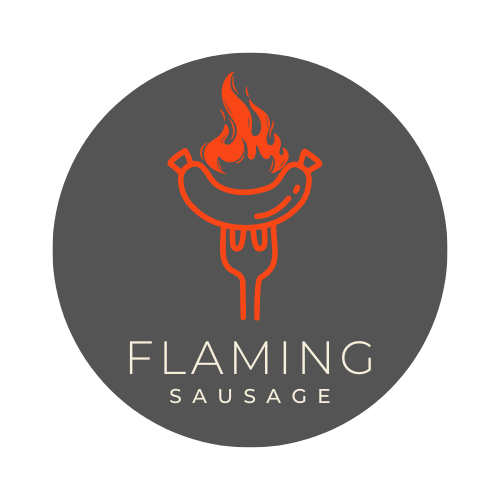Grilling a burger is a beloved pastime, but ensuring it reaches the right temperature for food safety is crucial. In this comprehensive guide, we’ll explore the ideal burger temperatures, the importance of safe meat handling, and our preferred method for achieving the perfect grilled burger. Let’s dive in!
Grilled Burger Temperature Guide
To ensure food safety, the USDA mandates that pre-ground meat must be cooked to an internal temperature of 160°F. This kills any lingering bacteria and guarantees the meat is safe to eat. For ground poultry, the safe temperature is 165°F.
Understanding the Difference
Ground Meat vs. Steaks: While steaks can be enjoyed medium-rare at 130°F due to surface bacteria being killed during high-temperature searing, ground meat poses a greater risk. Bacteria in ground meat is distributed throughout, necessitating a higher temperature of 160°F to eliminate any potential pathogens.
Why Ground Meat Requires Higher Temperatures: When a whole piece of meat is ground up, bacteria spread both inside and outside the burger patty. To ensure safety, the meat must be cooked thoroughly to 160°F, effectively eliminating the bacteria introduced during the grinding process. For precise temperature control, invest in a reliable instant-read thermometer like the Thermapen ONE.
Ground Beef Contamination Risks
Ground beef is more prone to contamination due to processing and packaging. Even a small amount of tainted meat can contaminate an entire batch, as pre-ground beef may come from multiple cows. This underscores the importance of proper handling and cooking techniques.
USDA Guidelines for Restaurants and Chefs
Restaurants and chefs collaborate with the USDA and local health departments to adhere to guidelines that ensure public safety. High-risk menu items, like medium-rare burgers, require the implementation of a Hazard Analysis and Critical Control Point (HACCP) plan to mitigate food safety hazards.
Reducing the Risk of Contamination
Implement these simple steps to minimize the risk of contamination:
- Keep ground beef refrigerated below 40°F.
- Use separate utensils and prep areas for raw meat and produce.
- Practice proper hand hygiene before and after handling raw meat.
- Thoroughly clean and sanitize kitchen surfaces.
- Prevent cross-contamination by separating raw and ready-to-eat foods.
The Benefits of Grinding Your Own Meat
Grinding your own meat offers numerous advantages, including:
- Freshness and Quality: Your self-ground meat will be fresher and of higher quality compared to prepackaged options.
- Customizable Meat Blends: Take control of your burger’s flavor by blending different cuts of meat, creating unique taste profiles.
- Cost-Effective: Grinding meat at home saves money by avoiding the markup on pre-ground meat.
Temperature Guidelines for Burger Doneness
While USDA standards dictate that ground beef must reach 160°F, when grinding meat at home, you have more flexibility to achieve your desired level of doneness. Here are the temperature guidelines for burger doneness when grinding your own beef:
- Well Done: Cook to an internal temperature of 160°F to 165°F. This results in a tougher, drier burger. If using store-bought ground beef, it must be cooked to this temperature or pasteurized at 140°F for at least 12 minutes.
- Medium Well: Aim for an internal temperature of 150°F to 155°F. This will leave a small amount of pink in the center while the outsides start to dry out slightly.
- Medium: Cook to an internal temperature of 140°F to 145°F, ensuring a slight pink color throughout the burger.
- Medium Rare: With proper precautions, you can enjoy a burger cooked to an internal temperature of 130°F to 135°F. This yields a juicy and flavorful burger.
- Rare: For safety reasons, it is not recommended to cook and consume a burger at this temperature range (120°F to 125°F).
The Best Way to Cook a Burger
To achieve a perfectly cooked burger, we recommend following a two-stage cooking method that gives you control over the burger’s temperature and doneness.
- Setup: Prepare your grill with two heat zones—a lower-heat side and a higher-heat side.
- First Stage: Place the burgers on the unheated side of the grill. This allows them to cook at a slower, controlled pace using the ambient heat from the hot side.
- Second Stage: Once the burgers are within 20°F of your desired final temperature, move them to the higher-heat side of the grill. Sear them until they reach your desired level of doneness.
- Benefits of the Two-Stage Method: This approach reduces carry-over heat and provides more time to prevent overshooting your target doneness. It ensures consistent results and juicy burgers.
Sizzling Conclusion
Armed with the knowledge of burger temperatures and grilling techniques, you’re now ready to create mouthwatering burgers that are cooked to perfection. Whether you’re grinding your own meat, following temperature guidelines, or employing the two-stage cooking method, these tips will elevate your burger game. Get creative, experiment with flavors, and enjoy the satisfaction of grilling the ultimate burger.

